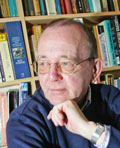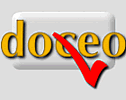Or "chalkboards" if you have highly-tuned PC sensors/censors! (They were originally physically black; you can still buy "blackboard" black paint at the DIY store. They turned green in the '70s because it is supposedly easier on the eye, before being largely abandoned in favour of "whiteboards". No-one makes any PC points about whiteboards...
- But not about "BlackBoard", which is a Virtual Learning Environment, which I personally detest as one of the clunkiest packages I have ever had to deal with, and which most of our students try not to use if they can avoid it. The interesting thing is how such a powerful brand was developed with such an un-PC name. Could it possibly suggest that most of the world does not share the (occasional) academic obsession with Political Correctness?
- No, this is about writing on boards with chalk. (What that? I hear you cry... Actually it is a form of gypsum, rather than "rock" chalk.) It predates whiteboards and pens, and is the basis of the usually derogatory phrase, "chalk and talk" used to describe pedestrian teaching.
As usual, a few things came together to promote this reflection;
- A correspondent made the point that in discussing "media" on the teaching site, I had ignored the traditional blackboard, and pointed me to the wonderful article linked to from the title of this piece, and
- The other day I called in at our resources centre for something obscure, and noticed that they still sell packs of chalk, both white and coloured. I asked Jo about this.
- (Jo is the assistant/technician/administrator/manager—I have no idea of her technical title—who manages this wonderful room from which students and staff can get everything from sheets of coloured card and glue-sticks to video-editing facilities. She does it with unfailing patience, good humour and expertise, even at this time of year when she and her part-time assistant are overwhelmed with student teachers trying to complete their final projects at the last minute.)
- She explained that while there are a few schools which still use chalkboards, students also use chalk for marking up, for example, mensuration exercises in school yards. There ain't no substitute.
- And I occasionally sat on committees with an economics professor who really annoyed everyone else by banging on about how chalk was the only practicable medium for economists.
- And my correspondent pointed out that in mathematics lectures, where substantial amounts of space are needed to write out equations, only chalk has the thickness of line to be legible from the back of a lecture theatre.
- And mathematicians need lots of space to write up their equations, so big, rolling chalkboards are just the thing.
- And Koerner's piece (link in title of this post) is, among other things, about the lecture as an unfolding narrative.
In other words, don't knock it. Every medium has its uses!


